Become An Art Teacher
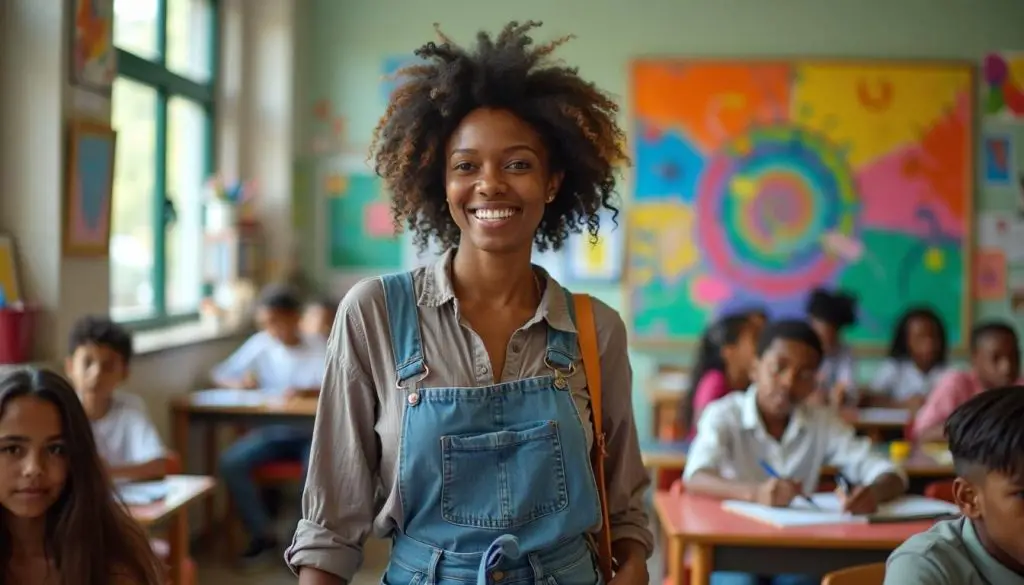
Deciding to teach art is an exciting journey filled with creativity and inspiration.
Art teachers play a crucial role, in guiding students‘ artistic talents and sparking their imaginations.
This guide walks you through every step, from educational requirements to landing your first job as an art teacher. Let’s paint the path to your new career!
Table of Contents
Education Requirements to Become an Art Teacher
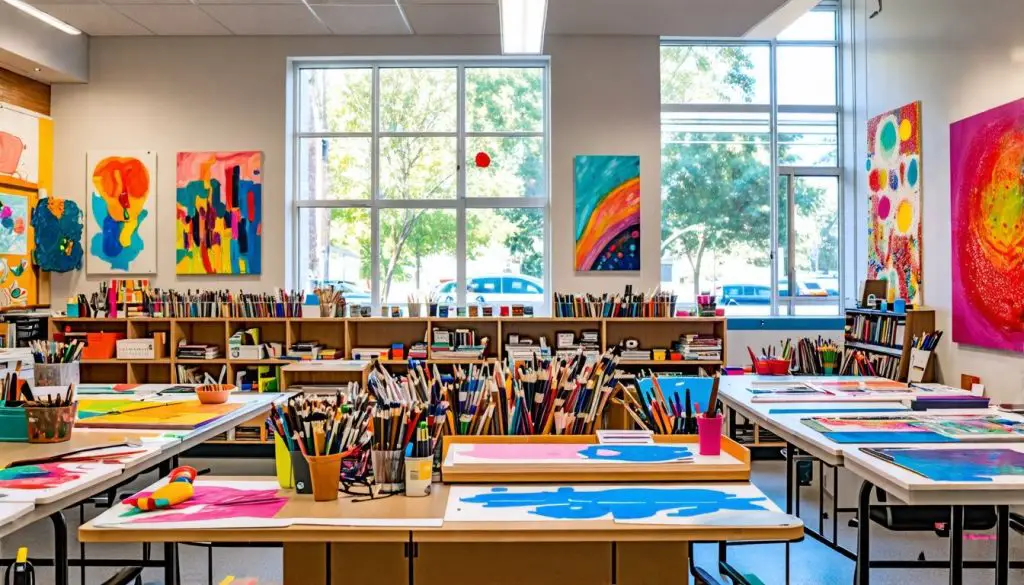
To become an art teacher, you will need a bachelor’s degree in art or a related subject, as well as completion of art and core competency exams.
Additionally, obtaining state certifications and teaching degrees is essential for entering this field.
Bachelor’s degree in art or related subject
Earning a bachelor’s degree in art or a subject like it is important if you want to be an art teacher.
This is the first big step and schools look for this when they hire art teachers.
You learn about different kinds of art, how to make art, and how to think about art in these programs. They also teach you skills you need to help others learn.
Degrees that fit well include ones in photography, ceramics, or art history. Art teachers’ jobs often ask for this kind of education.
When choosing where to study, think about what and where you want to teach later on. Every place has its special things like cost and what you can study there.
Art and core competency exams
Once you have your bachelor’s degree in art or a similar area, the next step to becoming an art teacher is passing some important exams.
These tests check if you know enough about art and teaching to work in a classroom.
You’ll need to show that you’re good at making art and understand how to share this knowledge with students.
States often use exams like the Praxis or National Evaluation Series to test future teachers’ skills.
The tests will ask questions about different kinds of art and how best to teach them. They also include general teaching skills that all teachers should have.
Passing these exams is key because they prove that you are ready to lead a class and help students learn about art.
After doing well on these exams, you can apply for a state license which allows you to teach in schools.
State certifications
To teach art in a public school, you must have a state license. Getting this license means you have met all the rules your state has for teachers.
These rules include having the right education and passing certain tests.
You will also need to get checked to make sure you have no criminal record. You start by taking exams that show you know about art and how to teach it.
After passing these tests, fill out forms for a teaching license in your state. Now, let’s look at what steps you need to take to become an art teacher.
Teaching degrees
After obtaining state certification, aspiring art teachers usually pursue a bachelor’s degree in art or education.
This includes degrees in fine arts, graphic design, illustration, and more.
To teach at the post-secondary level, individuals typically need a master’s degree or higher, such as a Master of Fine Arts (MFA), Doctor of Philosophy (PhD), or Doctor of Education (EdD).
These degrees provide essential knowledge and expertise for effectively instructing students and overseeing advanced projects within the field of art education.
Steps to Become an Art Teacher
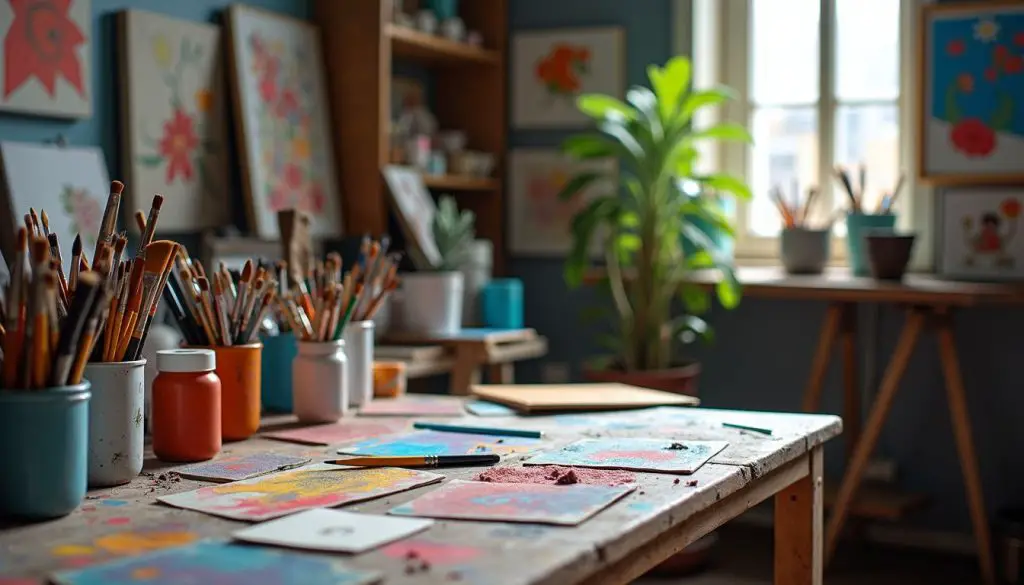
Explore career information by state, attend a teaching program, complete required exams and obtain a license. Read on to learn more about becoming an art teacher!
Find career information by state
Discovering career information for art teachers by state is crucial for understanding the specific requirements and opportunities available.
Each state may have different certification and licensing processes, as well as varying job prospects and resources for art educators.
It’s important to research the teaching certification requirements, job outlook, average salaries, and professional development opportunities in each state.
This knowledge will help aspiring art teachers make informed decisions about where to pursue their careers and how to best prepare themselves for success in their chosen location.
By exploring the specifics of art education in different states, future art teachers can gain insights into the demand for their skills.
They will also learn about the types of schools or organizations that may be hiring and any unique factors they need to consider when preparing for a career in this field.
Attend a teaching program
To become an art teacher, attending a teaching program is crucial.
This program should focus on developing strong artistic skills and knowledge, as well as excellent communication and interpersonal skills.
Depending on the type of art education you want to pursue, such as elementary, secondary, college, or private instruction, the teaching program may vary.
If you aim to work as an art therapist using art as a therapeutic tool to help individuals with emotional or psychological issues, specialized programs are available.
Art education teaching programs encompass degrees in fine arts, art history, photography, ceramics, graphic design and more.
These programs provide the necessary foundation for aspiring art teachers to develop their expertise in various areas of art education.”.
Complete required exams and obtain a license
To become an art teacher, you need to complete certain exams and get a license.
This involves passing state exams and meeting state license requirements, including education, experience, test scores, and a background check.
National organizations like the National Board for Professional Teaching Standards and The American Board for Certification of Teacher Excellence also offer certificate programs.
These programs can demonstrate your commitment to excellence in art education.
After completing a degree in art education, it’s essential to pass state-specific exams and apply for a state license.
This requires meeting various criteria such as educational qualifications, experience, test performance and criminal background checks.
Job Description and Common Tasks for Art Teachers
Art teachers are responsible for teaching and facilitating art classes, developing and implementing lesson plans, and evaluating student progress.
Teaching and facilitating art classes
Art teachers lead and guide students in exploring different art forms and techniques, fostering creativity and expression.
They prepare engaging lesson plans that cater to individual student needs.
By demonstrating various artistic styles, they inspire students and encourage self-expression.
Furthermore, art teachers assess students’ progress while maintaining a safe and organized classroom environment.
They also organize exhibitions to showcase their students’ work, celebrating their achievements.
Developing and implementing lesson plans
Art teachers carefully plan and create engaging lesson plans that cater to the diverse needs and interests of their students.
They design activities that encourage creativity, self-expression, and exploration of various art techniques and styles.
By incorporating these elements into their lessons, art teachers aim to inspire and spark the artistic abilities of their students.
Their goal is to provide a safe and organized classroom environment where students can freely express themselves through art while learning fundamental skills.
To develop effective lesson plans, art teachers must possess strong artistic skills as well as excellent communication and interpersonal abilities.
They are responsible for demonstrating and modeling different art techniques while encouraging their students to explore their artistic capabilities.
Evaluating student progress
Art teachers assess how well students are learning by observing their artwork, participation, and understanding of art concepts.
They review and grade assignments to measure student performance and provide constructive feedback for improvement.
Through regular communication with parents and colleagues, they ensure everyone is aware of the student’s progress.
To align with educational standards, art teachers create assessments that reflect the curriculum’s goals and objectives while also considering individual student needs.
By organizing exhibitions and showcases, they can display student work to celebrate achievements and demonstrate progress tangibly.
Resources and Opportunities for Art Teachers
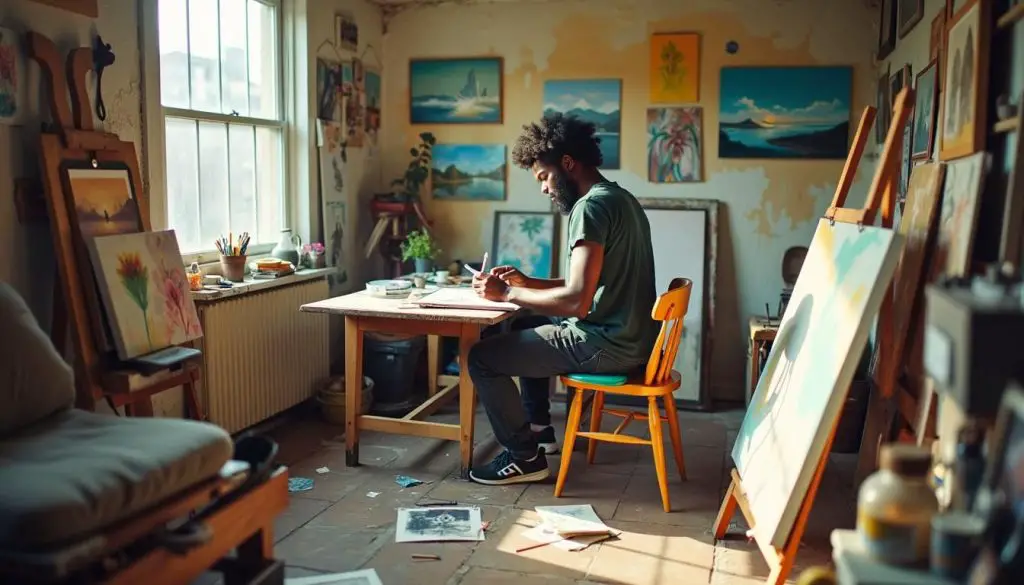
Art teachers have access to professional development resources, networking opportunities, and job search tools.
They can also connect with arts education organizations to enhance their careers and stay connected within the industry.
Professional development resources
Art teachers have access to various professional development resources aimed at enhancing their teaching skills and staying updated with the latest trends.
These resources include workshops, conferences, and online courses, offering opportunities for skill enhancement.
Moreover, mentorship programs and networking events provide valuable connections and educational materials for art educators.
Joining professional organizations such as the National Art Education Association also opens doors to additional resources.
Partnerships with cultural institutions like museums and galleries enrich teaching practices.
These opportunities enable art teachers to continuously improve their expertise and stay connected within the dynamic field of art education.
This ensures a well-rounded approach to imparting knowledge.
Networking opportunities
After utilizing professional development resources, art teachers can expand their career horizons by tapping into networking opportunities.
They can connect with other professionals in the field through national organizations such as the National Board for Professional Teaching Standards and The American Board for Certification of Teacher Excellence.
Art teachers have the chance to collaborate with other educators and attend art education conferences and workshops.
They can also participate in art education associations and online communities.
These avenues provide a platform for sharing insights, gaining new perspectives, and staying updated on the latest trends in art education.
Networking allows art teachers to build relationships that could lead to potential job opportunities or collaborations on projects within the artistic community.
Job search tools
Art teachers can access a variety of job search tools to find employment opportunities.
They can utilize online job boards, art education websites, and specialized platforms catering to the education sector and art-related careers.
Networking with other art educators, attending professional development events, joining art teacher associations, and using social media platforms can be valuable.
These activities help in staying updated on job openings in the art education field.
Career counseling services offered by educational institutions or professional organizations can also provide support.
Building a strong portfolio and resume is crucial for showcasing their work to potential employers.
Arts education organizations
Art teachers may benefit from joining arts education organizations like the National Art Education Association (NAEA) and the State Art Education Association in their respective states.
These organizations provide professional development resources, networking opportunities, and job search tools specific to art education.
They also offer support and advocacy for art teachers while also promoting high-quality art education standards at a national level.
The NAEA also offers various certificate programs and learning resources that can help art teachers enhance their teaching skills.
Concluding Thoughts on Become An Art Teacher
Becoming an art teacher requires a bachelor’s degree in art or related subjects, state certifications, and completion of a teaching program.
It involves steps such as finding career information by state, attending a teaching program, and obtaining required exams and licenses.
Art teachers have diverse opportunities for professional development, networking, job search tools, and resources through arts education organizations to excel in their careers.
FAQs About Become An Art Teacher
1. What do I need to become an art teacher?
To become an art teacher, you usually need a bachelor’s degree in art or education and a state teaching license. Some schools might want you to have a master’s degree.
2. Can I find jobs for art teachers online?
Yes, websites like indeed.com often list jobs for art teachers that are available in different schools.
3. What kind of classes will I take to be an art teacher?
You’ll take general education courses, and specialized art courses, and also complete student teaching as part of your training.
4. Is being an adjunct instructor different from being a full-time art teacher?
Yes, being an adjunct instructor is often part-time while full-time positions can include benefits such as salary and more steady work hours.
5. Where can art teachers work?
Art teachers can work in many places including middle schools, secondary schools (like high schools), galleries or even non-profit organizations.
6. How does the hiring process for becoming an effective language arts teacher differ from other subjects?
The hiring process may include showing you’re qualified to teach by passing content knowledge tests specific to the subject of Art and completing required coursework focused on teaching arts.
References
- https://learn.org/articles/What_are_the_Core_Courses_of_a_Bachelors_Degree_in_Art_and_Design.html
- National Evaluation Series. (n.d.). https://www.nestest.com/
- https://www.education-colleges.com/art-teacher-education/
- https://thebestschools.org/resources/teaching-requirements-by-state/
- https://www.alleducationschools.com/teacher-certification/
- https://www.nbpts.org/
- https://artsintegrationframework.org/facilitation/
- https://mcginnisportfolio.weebly.com/planning-amp-preparation.html
- https://theartteacher.net/2021/06/28/fun-assessment-ideas-for-art-lessons/
- https://www.esc7.net/apps/pages/nbpts
- https://en.wikipedia.org/wiki/American_Board_for_Certification_of_Teacher_Excellence
- https://www.arteducators.org/opportunities/career-center
- https://theartofeducation.edu/2016/09/involved-local-art-education-association/
- https://www.naea-reston.org/
- https://www.onlineeducation.com/faqs/what-is-a-phd-degree
- https://www.coursera.org/articles/doctor-of-education

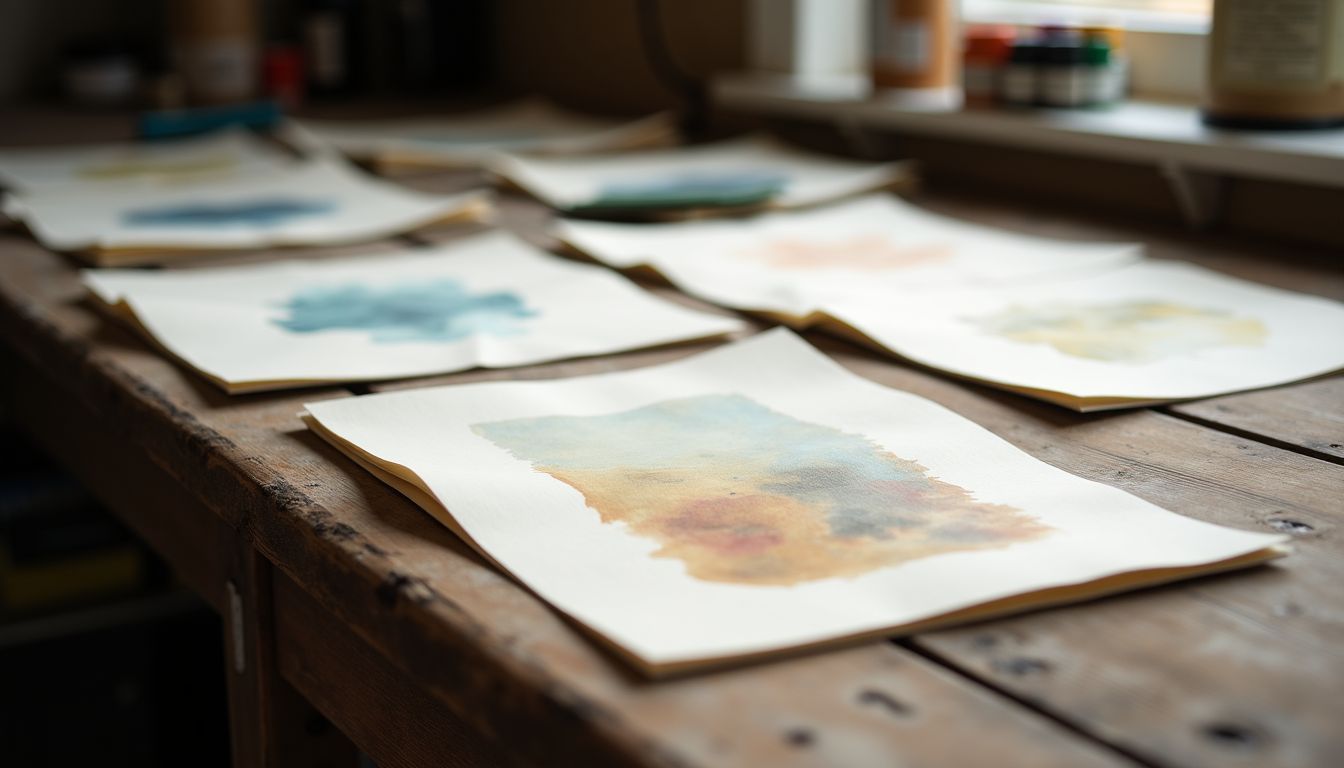

Leave a Reply